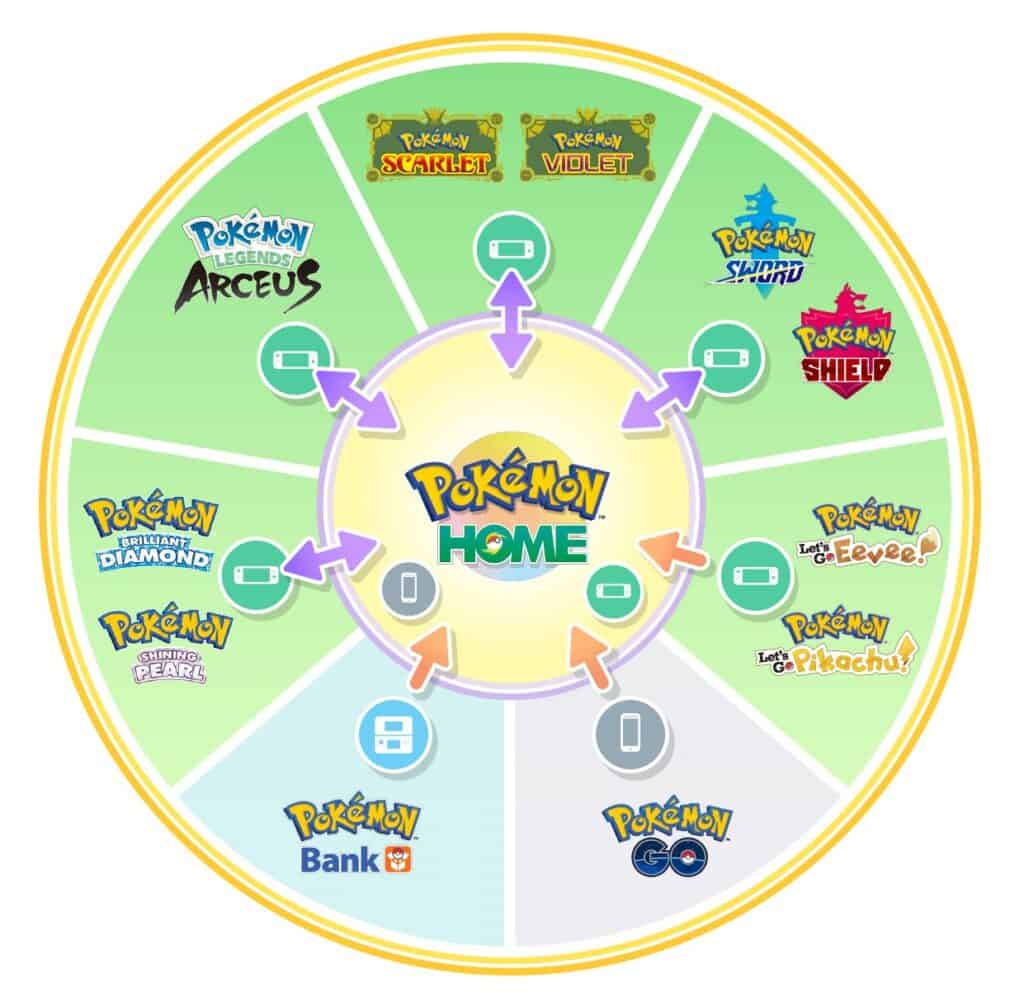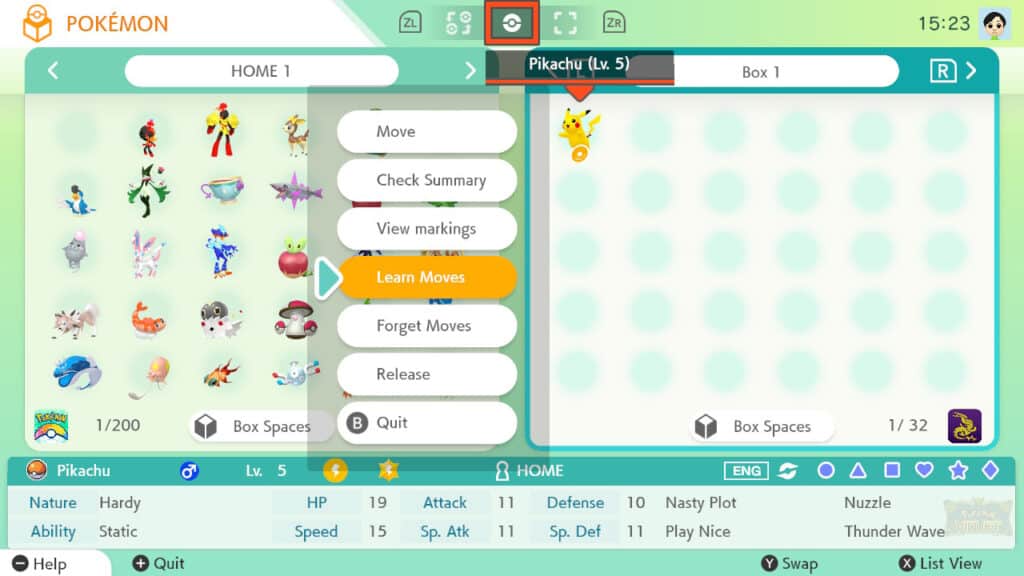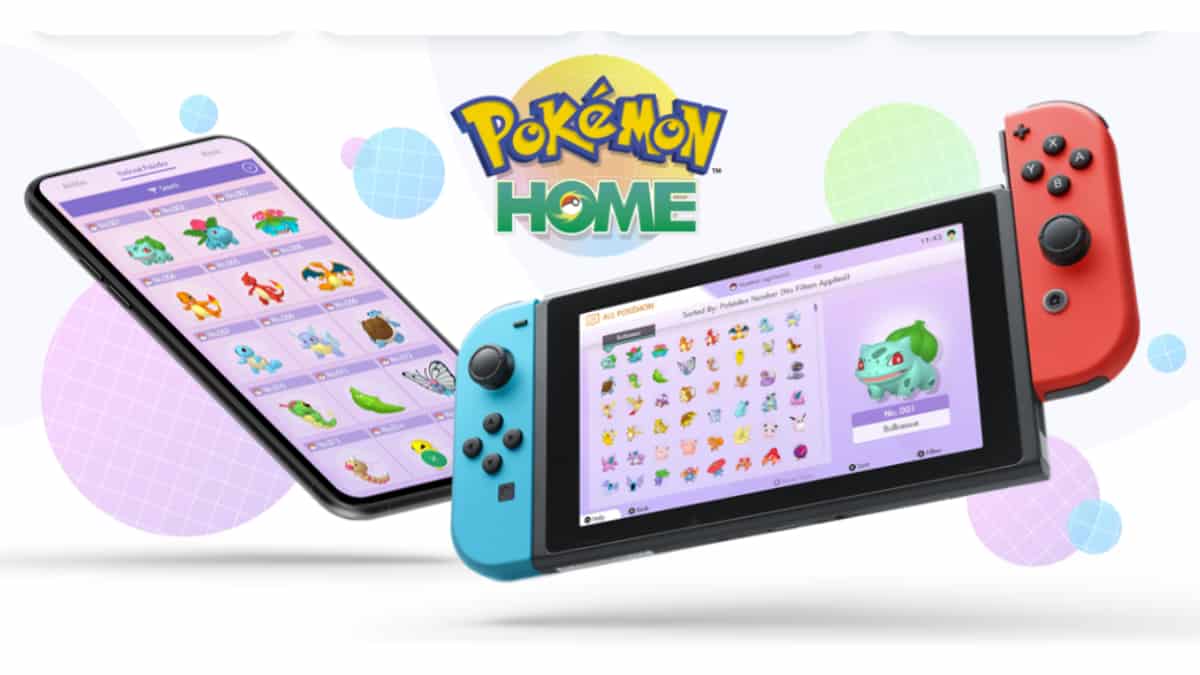For decades, Pokémon has been a recognizable name thanks to the release of countless video games, highly successful anime series, and addicting trading cards. Pokémon is one of those brands that simply understands how to appeal to a wide audience. Kids love Pokémon, but so do adults. Many 30-somethings grew up with the franchise and still love it to this day. Everyone has at least one favorite Pokémon and that’s why the franchise is still kicking.
One thing that has plagued Pokémon gamers for years, however, is the reality of having to start every single Pokémon game from scratch. Back in the day, transferring Pokémon between games was tedious at best. In the modern era of gaming, that doesn’t fly with players who sink countless hours of playtime into their games. Not only are games expensive, they’re a time investment as well. Thankfully, The Pokémon Company has advanced with the times and released a tool for trainers everywhere to get the most out of their gameplay, Pokémon: Home.
What is Pokémon: Home?

The short answer is that Pokémon: Home is a cloud service for Nintendo Switch and mobile devices. The app stores Pokémon the player has collected from any compatible Pokémon game or app. This sounds too good to be true. In the past, players have had to jump through hoops to attempt to import Pokémon from their Pokédex to newer games. Pokémon: Home solves those issues, though. By downloading the app onto their Switch and their phone, users can access their Pokémon bank from anywhere as long as they sync both with their Nintendo account.
Since Pokémon: Home transfers and stores Pokémon from multiple games, this allows players to keep their favorites safe in one place. This also means they can move strong or valuable Pokémon from one game to Home, and then to another game. By using Pokémon: Home, players won’t have to worry about their hours of grinding to catch and train Pokémon going to waste the second a new game comes out.
As long as Pokémon: Home syncs with the game and/or app, Pokémon can be shuffled to and from Home freely. All the compatible Pokémon games and apps include:
- Pokémon Sword (2019)
- Pokémon Shield (2019)
- Pokémon: Let’s Go, Eevee! (2018)
- Pokémon: Let’s Go, Pikachu! (2018)
- Pokémon Scarlet (2022)
- Pokémon Violet (2022)
- Pokémon Legends: Arceus (2022)
- Pokémon Brilliant Diamond (2021)
- Pokémon Shining Pearl (2021)
- Pokémon GO (2016)
- Pokémon Bank
Most of the games that work with Pokémon: Home are relatively recent releases. This seems disappointing for any trainer who’s saved Pokémon from older games. Fortunately, Pokémon Bank solves this issue. Pokémon Bank (made free in March 2023) is an app that allows users to store up to 3,000 Pokémon from older games like Pokémon X and Y and Pokémon Ultra Sun and Ultra Moon. Since Pokémon Bank connects to Pokémon: Home, players can move over some of their old favorites.
Pokémon: Home does have some limitations between the games and apps it supports, though. Home can store Pokémon from every compatible game and it can send Pokémon to most of the games. While it can store Pokémon from Let’s Go, Pikachu!, Let’s Go, Eevee!, Pokémon GO, and Pokémon Bank, it cannot transfer Pokémon back to these four applications. Trainers should be cautious when transferring Pokémon from these applications because they will not be able to send them back.
While these limitations are a little frustrating, they’re a small price to pay for the convenience of Pokémon: Home. Most trainers use Pokémon: Home to transfer and store Pokémon, but Home offers other features that make the app worth using.
What Other Features Does Pokémon: Home Offer?

In addition to storing Pokémon and moving them from game to game, Pokémon: Home also offers a more convenient way to trade Pokémon with other trainers. Modern Pokémon games allow players to trade in-game with other players as long as they’re connected to online play, but Pokémon: Home allows trainers to do it from the convenience of their storage database. Not only is trading through Home convenient, but the app also provides many different methods of trading:
- Wonder Box: Users can place Pokémon they wish to trade into their Wonder Box. These Pokémon can be traded with anyone around the world and don’t require the user to be online to accept the trade. This is a fast and easy way to trade, but players shouldn’t put any Pokémon in the Wonder Box that they aren’t prepared to lose. This is a great way to get rid of Pokémon trainers don’t want and potentially find some gems in return. The number you can trade in one sitting will increase with a premium membership.
- GTS: GTS is a more specific system designed for trainers who want to specify what Pokémon they have to offer and what they want in return. Pokémon: Home will then pair the trainer up with someone who meets their specifications. Users can increase the number of Pokémon they can trade at once with a premium membership.
- Room Trade: In Room Trade, a user creates a room specifically for the purpose of trading. Anyone who joins the room can participate in the trade. Each room can hold 20 people, but this style of trading is a bit of a gamble. Users won’t know what Pokémon they’re getting until they complete the trade. Anyone can join a room, but in order to create a room, the user must have a premium membership.
- Friend Trade: This is the most classic style of trading there is. Once a user becomes friends with another trainer, they’ll be able to trade directly with them at any time.
Storing, transferring, and trading are the main reasons that trainers download Pokémon: Home, but the app does offer other features. With the Nintendo Switch version of the app, users can convert Pokémon: Home Points into League Points. These League Points can be used in Pokémon Scarlet and Violet. Players can use this in-game currency to purchase valuable items.
Home users can also see Pokémon details based on different games. Once the user registers a Pokémon to their Pokémon: Home database, they can see that Pokémon’s information from every game the Pokémon has been in. For trainers who love Pokémon lore and how each game differs, this is a great bonus. Trainers are also able to edit the moves that their Pokémon know before transferring them back into a game. Users also have access to the National Pokédex, which allows for more thorough lore from various games and Pokédexes from all over the world.
Other fun Pokémon: Home features include being able to look at Pokémon from multiple angles, battle data, and Pokémon news. The app also includes a catch calendar so trainers can keep track of their Pokémon-catching history. Users can customize their profiles in the Your Room feature, judge Pokémon to gauge how powerful they are, and even convert Home Points into Battle Points that can be used in various Pokémon games. There’s also a mystery gift function built in!
Do Users Need a Premium Pokémon: Home Membership & How Much Does It Cost?

©Cast Of Thousands/Shutterstock.com
Pokémon: Home is free to download, but like many free-to-play or free-to-download apps, it contains paid content. Players can use the app completely free, but they’ll experience limitations that a premium membership won’t.
| Available Content | Basic Plan | Premium Plan |
| Move Pokémon from Pokémon Bank to Pokémon Home | No | Yes |
| How many Pokémon can be stored | 30 Pokémon | 6,000 Pokémon |
| Wonder Box Maximum Capacity | 3 Pokémon | 10 Pokémon |
| GTS Trade Capacity | 1 Pokémon | 3 Pokémon |
| Room Trade | Participation only | Participation & Room Host |
| Judge Pokémon | No | Yes |
Due to how few Pokémon the app stores on Pokémon: Home’s basic plan, serious Pokémon trainers will need to upgrade to get the most out of the app. The sizable storage upgrade alone makes the premium plan worth the cost. Fortunately, a membership isn’t too expensive. The Pokémon Company offers three different payment plans, a monthly, a semi-annual, and an annual plan.
- 1 Month (30 days) – $2.99
- 3 Months (90 days) – $4.99
- 12 Months (365 days) – $15.99
The 12-month plan gets the player the most bang for their buck. Paying monthly will cost around $36 a year, while the 3-month plan will cost about $20 a year.
The image featured at the top of this post is ©Screenshot from Pokemon HOME..
